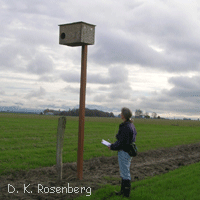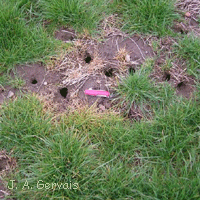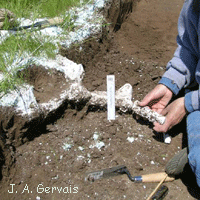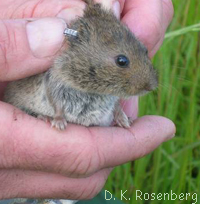Voles in Agriculture
Current and Recent Projects
 |
Attracting Barn Owls- Barn owls (Tyto alba) are major vole predators. Although barn owls are found within the Willamette Valley, they are not very common even in years when voles are abundant. Oregon Wildlife Institute set up grids of barn owl nest boxes in agricultural fields to test whether lack of nesting and roosting sites were limiting barn owls, and what surrounding habitat attracts barn owls to boxes. Conclusions are published in this report. Sponsor: USDA National Institute for Food and Agriculture. |
 |
Monitoring Vole Populations- Estimating vole numbers for management or research usually requires trapping, which can be expensive and carries risks of disease transmission from voles to humans. The Oregon Wildlife Institute tested a number of vole sign indices including counts of burrow entrances to evaluate whether the use of indices rather than trapping could provide acceptable estimates of abundance. The results are published in “Testing sign indices to monitor voles in grasslands and agriculture“ in the journal Northwest Science. Sponsor: Oregon Seed Council. |
 |
Impacts of Vole Activity on Soil Properties- Voles at peak densities can have major impacts on vegetation resulting from their herbivory, but much less is known about the consequences of their burrowing activity. In collaboration with researchers at Oregon State University and the Agricultural Research Service, Oregon Wildlife Institute conducted a pilot study on the impacts of vole activity on nutrient cycling. Voles have measurable and durable impacts on nutrient profiles in the soil that are associated with their burrows. We published the results “Effects of gray-tailed vole activity on soil properties” in the journal Northwest Science. |
